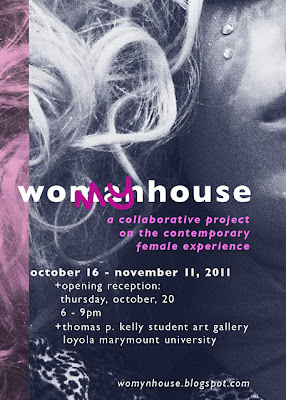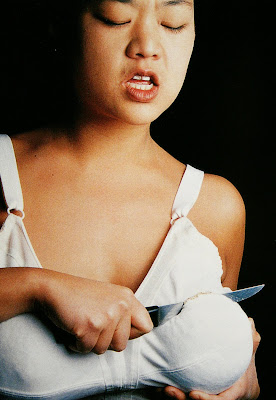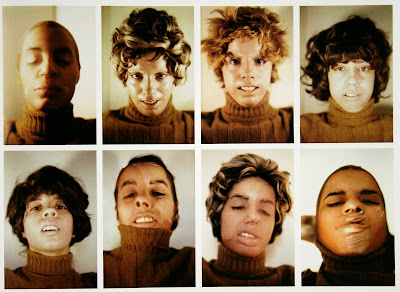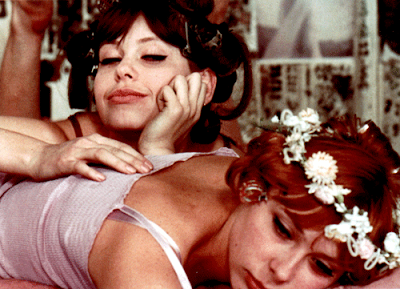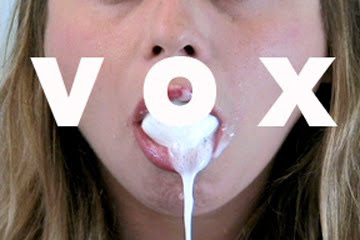
Audrey Chan is a Los Angeles-based artist, writer, and educator whose work addresses civic discourse, rhetoric, and the feminist construct of “the personal is political.” She will perform her homage to feminist powerhouse Judy Chicago.
Jeseca Dawson is a video performance artist and photographer who explores issues around systemic violence in American culture. Her video, Girlfriend I depicts a M.I.L.F. gone wild in an ecstatic expression of patriotism in her own kitchen. The work is inspired by second-wave feminist video art that focuses on issues around identity and self-worth.
Jessica Dolence’s Drift negotiates the space between land and water through non-linear narratives and hybridized digital abstractions. Maya Deren’s At Land plays on the television, as an audible rhythm echoes through the space calling up images of the sea. The landscape becomes dislocated as Deren moves and adapts to a new territory.
Kara Hearn’s E.T. is part of her series Reincarnated Scenes. The series features her efforts to degrade and venerate the heroics of Hollywood movies through reenactments. She uses the most straightforward techniques of cinema to recreate narratives that are stripped of everything but the pathos inherent in the medium.
In The Playfulness of Being Amnesiac I, Gelare Khoshgozaran recreates a game that was popular in the schools of Iran where she was born and raised. Reminiscent of the Halloween game of bobbing for apples, a person tries to bite an apple hanging from a string that is held by another person who has relative agency and control over it. Khoshgozaran recontextualizes the game as a performance in her studio, showing the exhaustion and dizziness of the obsessive action. The repetition of the gesture has a numbing effect that creates a condition of amnesia, allowing one to forget the pain, endure, and repeat the struggle.
Michele Jaquis’ unitl i can speak my mind was inspired by a recurring dream that she and her twin sister had for several years. “In the dream we are chewing gum and no matter how much gum we attempt to remove from our mouths there is always too much still inside. My sister believes that once she is given, or gives herself, permission to voice her opinion about a pressing issue, the dreams subside.”
Melissa Potter’s Boy Brides & Bachelors is an animated video shot on a cold January night in Southeastern Serbia during a ritual called Surovar in which men dress as women and engage in pretend sexual acts with village bachelors. Potter uses stop motion animation to engage questions about the underlying meanings of the ritual, as she brings attention to her inability to translate the mysterious pagan ceremony, and complicated nuances of gender itself.
Linda Ravenswood recollects detritus of her life in the city of Los Angeles, through impressionistic works that are part narrative and part ceremony. Her performance When my back is turned, explores a desire to engage her memories of “otherness” through a tension between immobility and growth.
As a woman artist from Iran, Nooshin Rostami’s art practice explores the doubts, questions, and fears that she never dared to express inside her home country. Her video Prayer, questions the “godly duties” that are foisted upon young Muslim boys and girls, as they are expected to faithfully assume their religious obligations. The video juxtaposes a recording of Azan -the call for prayer- from Iranian national TV, with a private ritual.


